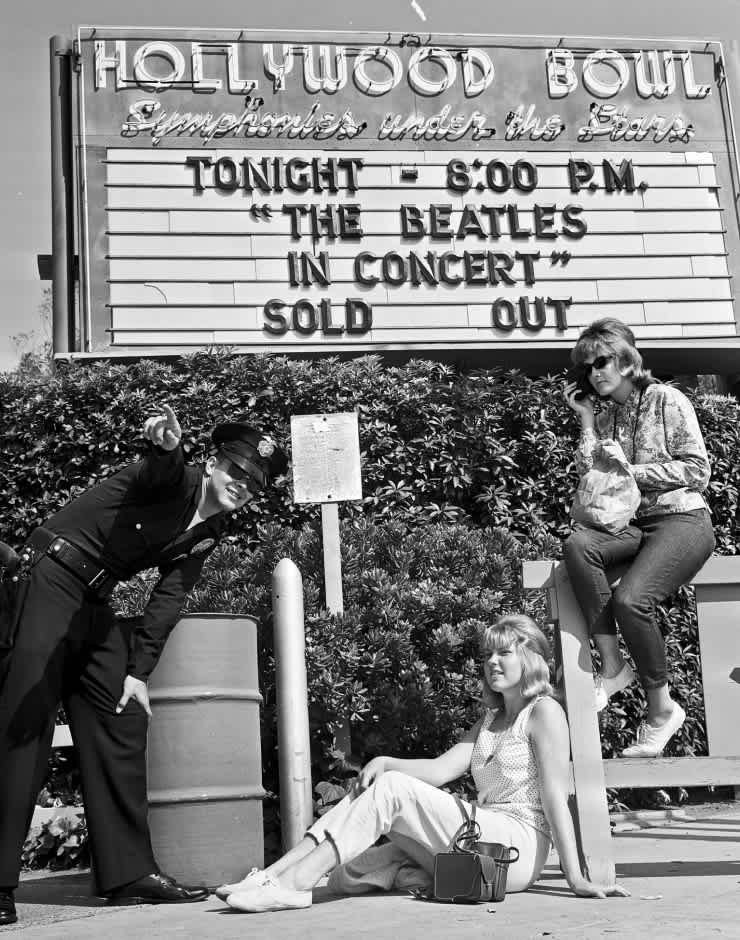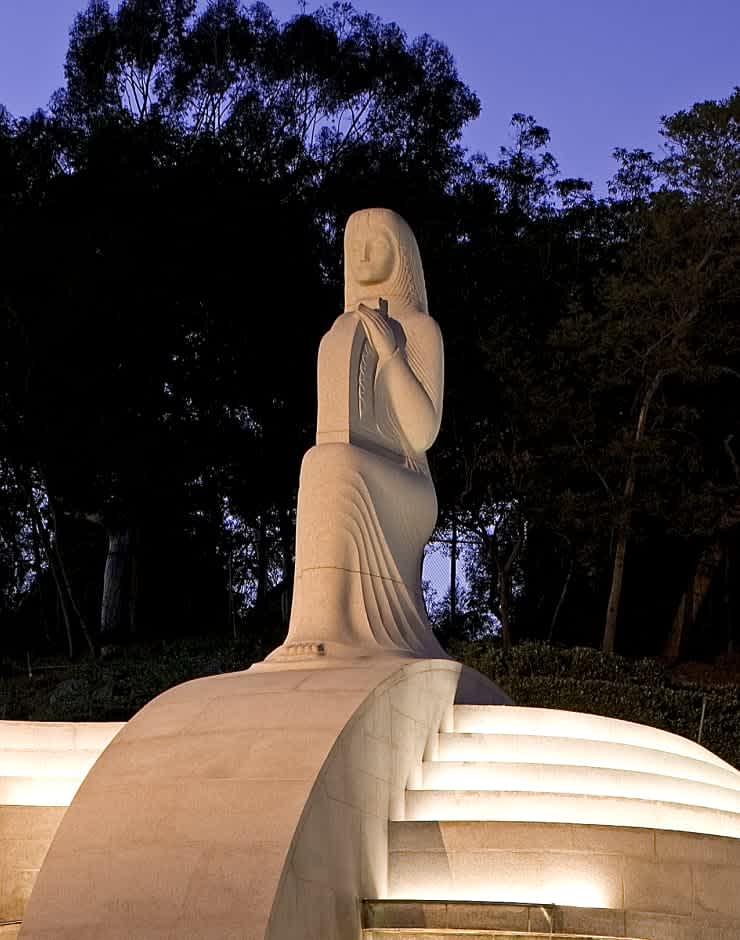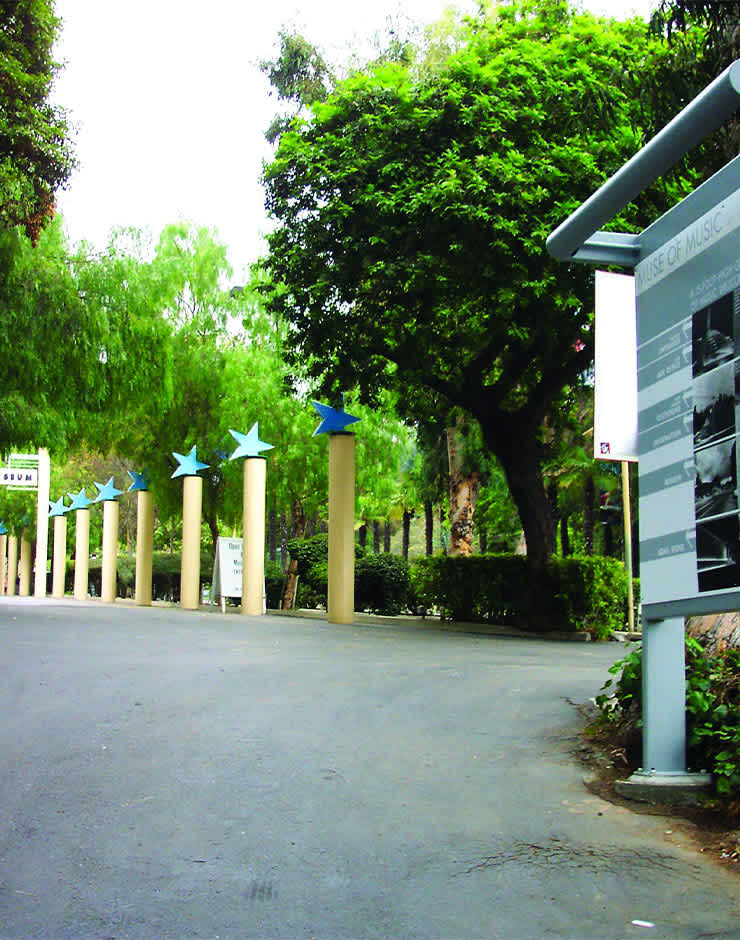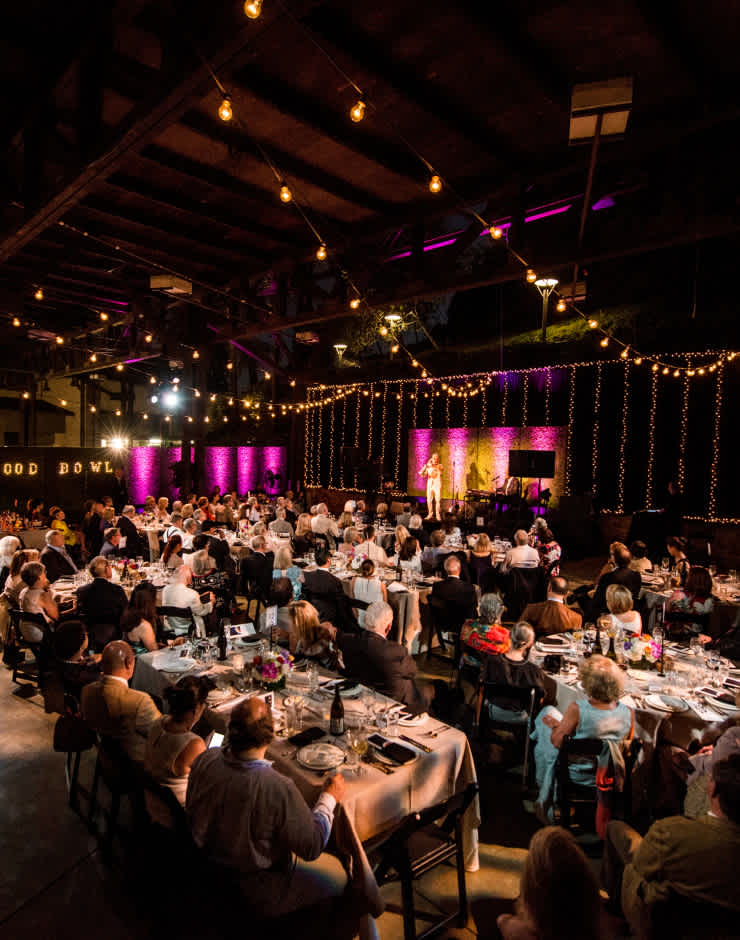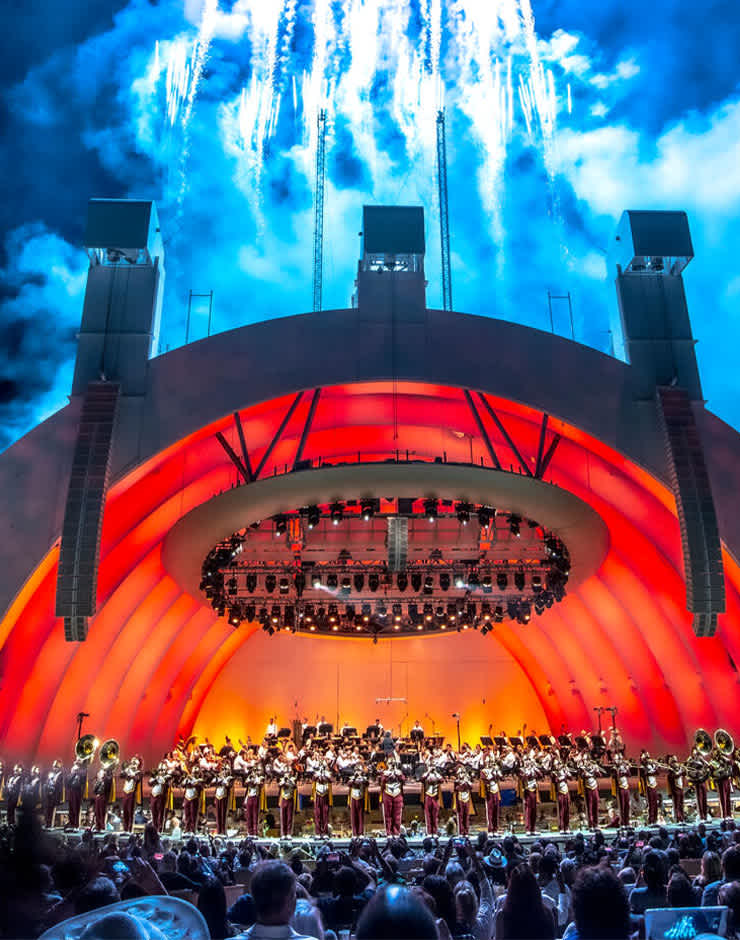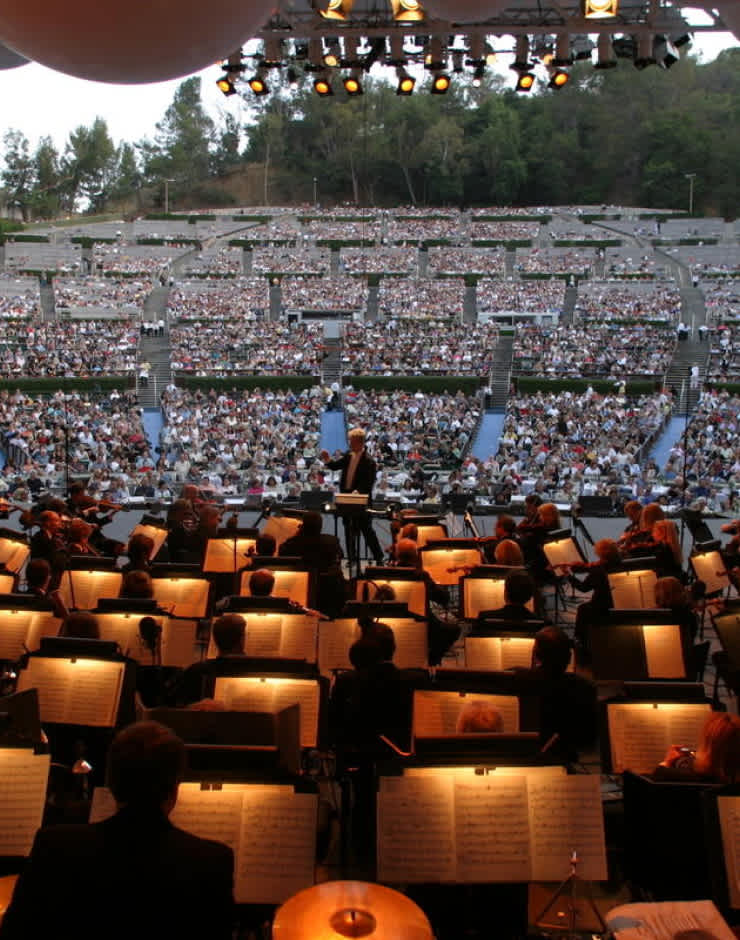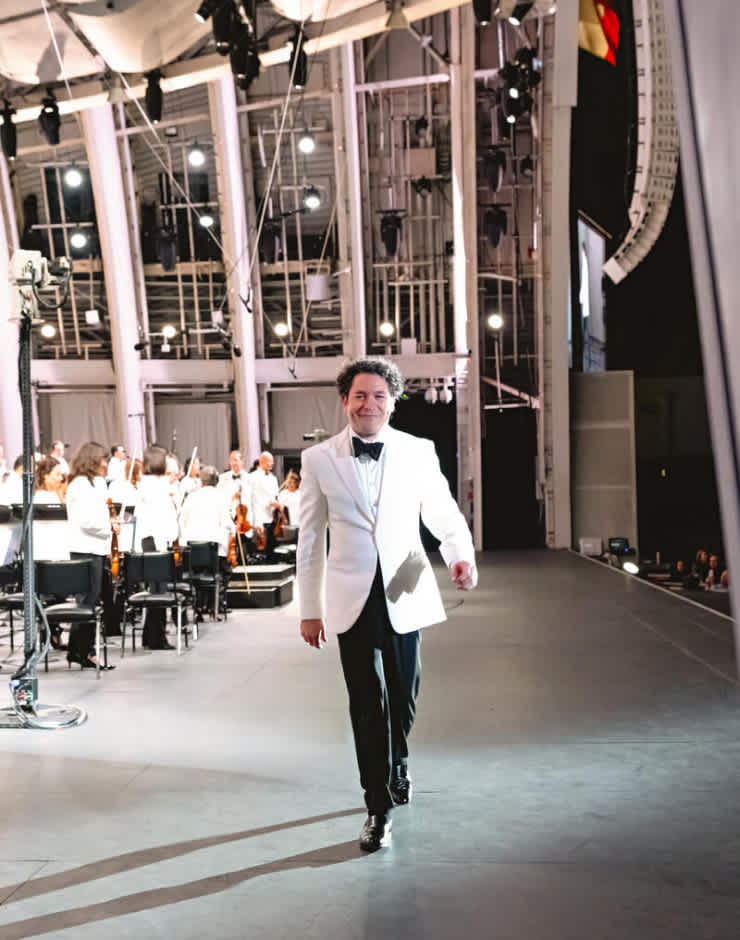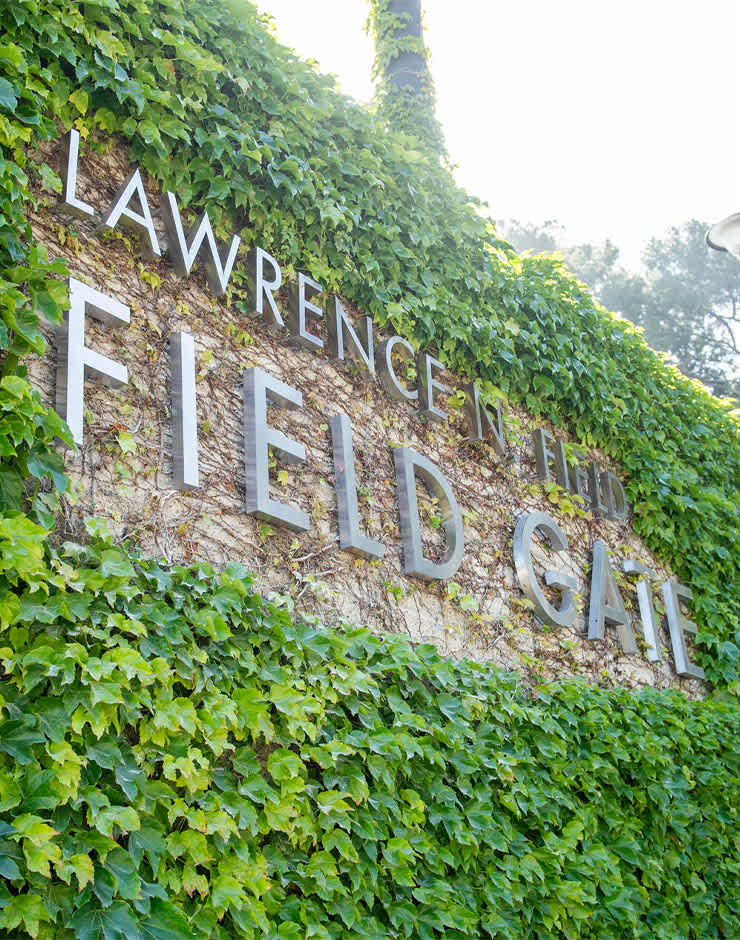The First 000 Years
Presented by
Explore Episodes
![The Marquee]()
Play Episode
Episode 1 | 9:26
MARQUEE
Seeing your name on the Hollywood Bowl marquee is one of the milestones signaling you...
![Muse of music]()
Play Episode
Episode 2 | 7:21
MUSE OF MUSIC
Born of the Great Depression and nearly lost to disrepair, the fountain complex has s...
![Episode cover]()
Play Episode
Episode 3 | 7:28
PEPPER TREE LANE
Pepper Tree Lane—the walkway that transports you to the Bowl—is named for the trees t...
![Tea Room]()
Play Episode
Episode 4 | 5:35
TEA ROOM
For decades, the Hollywood Bowl’s tea room and gardens were a gathering place as mean...
![Hollywood Bowl Shells]()
Play Episode
Episode 5 | 7:37
HOLLYWOOD BOWL SHELLS
From controversial choice to celebrated symbol, the Hollywood Bowl’s historic shells ...
![The Pool Circle]()
Play Episode
Episode 6 | 6:06
POOL CIRCLE
Of all the experiments in the Bowl design over the last century, none has inspired mo...
![SEATING AREA]()
Play Episode
Episode 7 | 8:22
SEATING AREA
Whether you prefer a box or a bench, the Hollywood Bowl experience has been a beloved...
![Backstage]()
Play Episode
Episode 8 | 7:33
BACKSTAGE
Before the current shell was installed in 2004, backstage at the Bowl was more greene...
![The Park]()
Play Episode
Episode 9 | 8:46
THE PARK
The Hollywood Bowl is an 88-acre Los Angeles County Park, filled with picturesque hid...
![]()
Play Episode
Episode 10 | 12:13
NAMED SPACES
Only a handful of truly devoted Bowl fans have been honored with a space named after ...
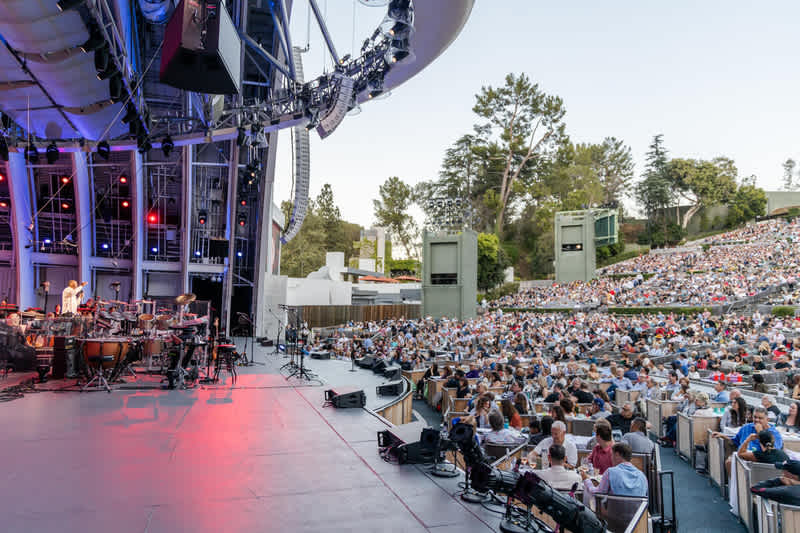
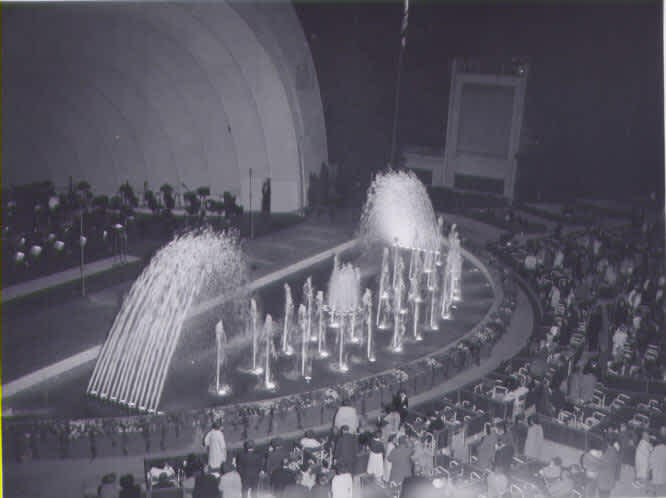

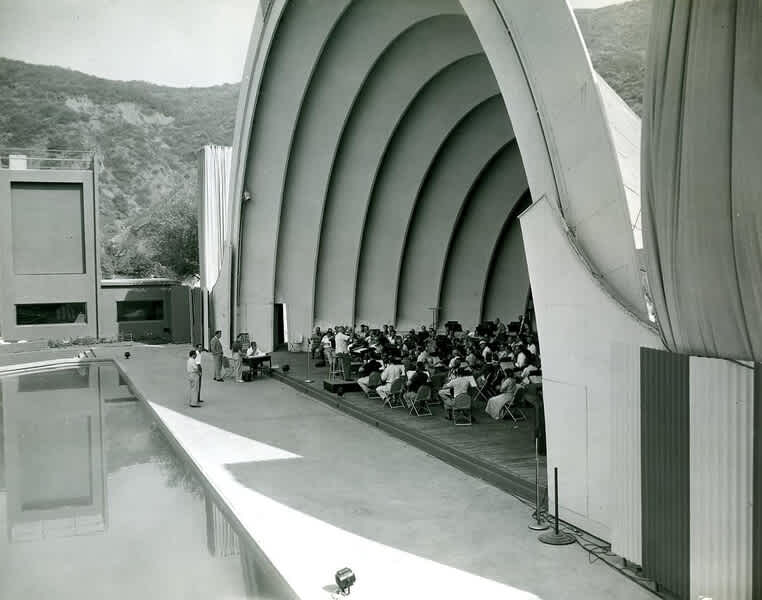
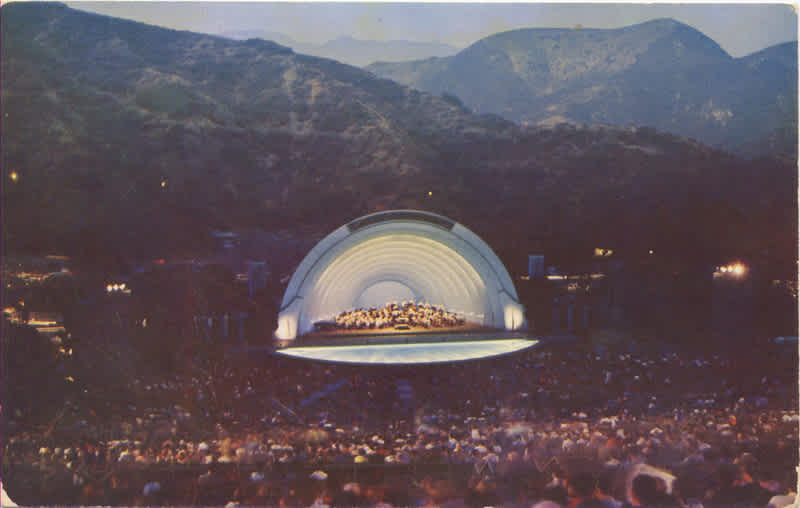
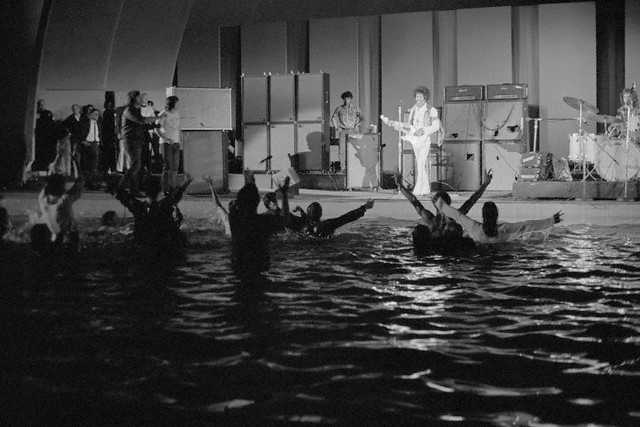
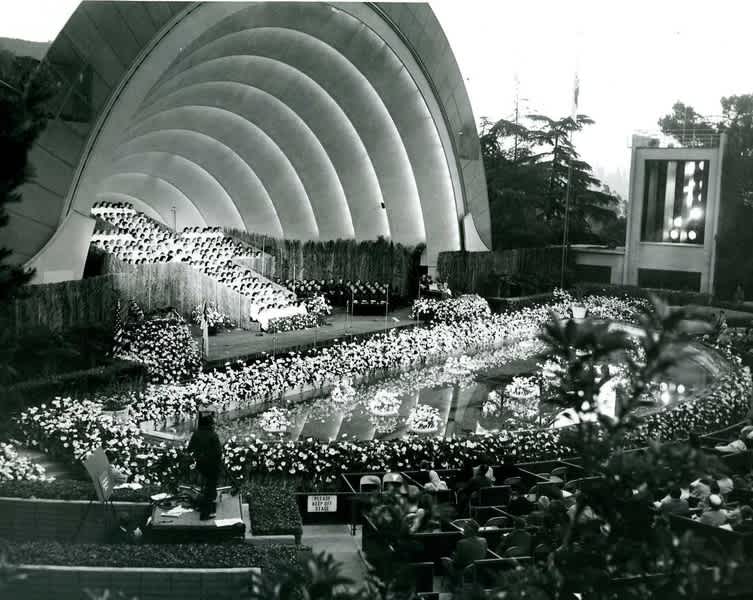
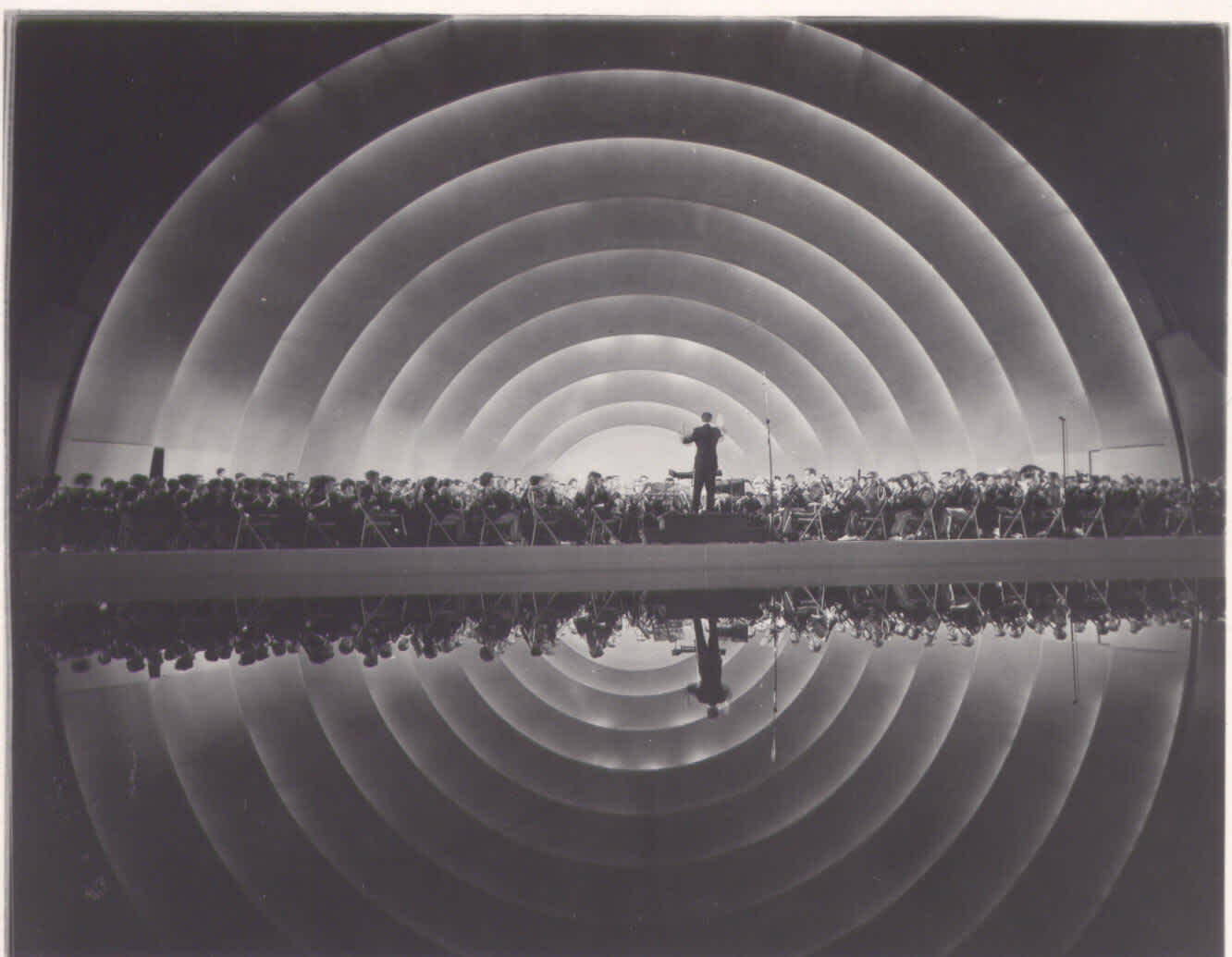
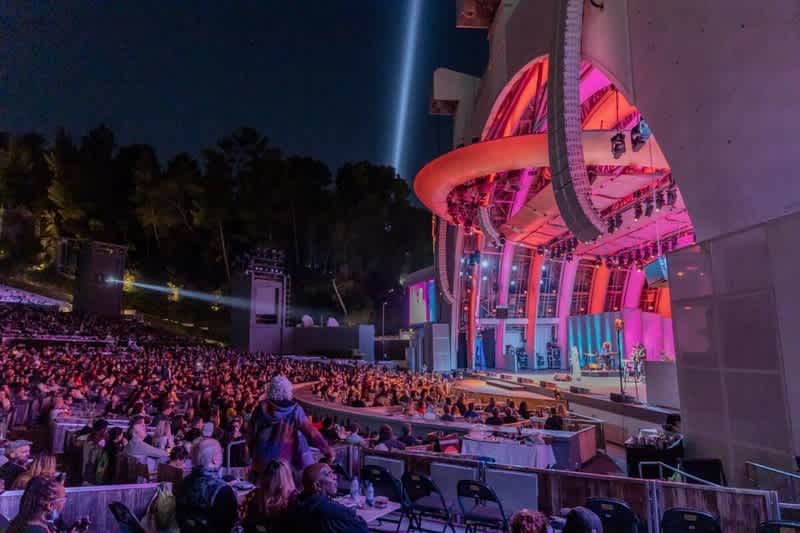
Audience members in the Pool Circle sit just a few feet away from the performers on stage.
Photo Credit
Dustin Downing
An overhead view of reflecting pool, fountains, and patrons congregating circa 1959.
Photo Credit
Los Angeles Philharmonic Archives
The Bowl’s pool and fountain, designed by Henry Dreyfuss and S. J. Hamel, ca. 1957
Photo Credit
Los Angeles Philharmonic Archives
Musicians rehearse just a few feet from the water’s edge on a hot summer morning, ca. 1960
Photo Credit
Photo by Otto Rothschild Courtesy of The Music Center
The Bowl’s shell and lights are reflected in the pool circle, ca. 1960
Photo Credit
Los Angeles Philharmonic Archives
Fans jump into the pool circle during Jimi Hendrix’s performance, 1968
Photo Credit
Henry Diltz/CORBIS
Thousands of lilies decorate the stage and pool for an Easter Sunrise Service
Photo Credit
Photo by Otto Rothschild courtesy of The Music Center
Leonard Bernstein and the New York Philharmonic on stage, reflected in the pool; 1963
Photo Credit
Photo by Otto Rothschild Courtesy of The Music Center
The pool circle today, at a KCRW Festival concert in 2021.
Photo Credit
Dustin Downing
1/9
It’s become ingrained in Hollywood Bowl lore, but the iconic reflecting pool was there for fewer than 20 of the Bowl’s 100 summers—between 1953 and 1972. Fifty years later, we still call the semi-circle seating area immediately in front of the stage “The Pool Circle.”
On most nights now, it’s filled not with 100,000 gallons of water, but with the Bowl’s most generous donors and well-heeled patrons, enjoying dinner service. For rock or pop concerts, the tables are pulled out, and it becomes a seated or general admission floor area, or depending on who the act is, a mosh pit. That dichotomy—between the height of elegance and the height of chaos—also characterized the 20-year history of the reflecting pool.
Of all the experiments in the Bowl’s design over the last century—and there have been many— the pool was definitely the most spectacular, with respect to its ostentatious flair and the hilarious, sometimes death-defying stories that have been passed down about it.
In 1953, the industrial designer Henry Dreyfuss was hired to install a half-moon shaped reflecting pool in front of the Bowl’s iconic shell—part of a series of upgrades to the venue championed by then-Bowl Association President Dorothy Chandler. Dreyfuss was a leading figure in midcentury design—he developed kitchen sinks, clothes irons, tractors, airliners, typewriters, cameras, vacuum cleaners, even a prototype for a flying car. And the reflecting pool he designed for the Bowl was a perfect example of his aesthetic.
Together with S. J. Hamel (who designed the fountains for the 1939 World’s Fair in New York), Dreyfuss added a series of jets that shot water up in rainbow hues. A couple years after that, Hamel and Dreyfuss added a musical fanfare, that played to a choreographed fountain and light show, complete with gas flames. It was loud and fun and weird and whimsical.
But there was a limit to the whimsy allowed at the Bowl. Longtime Bowl General Manager William Severns’ favorite idea for the pool was shot down. He wanted to do a water ballet with the orchestra playing music on stage and dancers in the pool below. People were outraged. They sent letters, saying that Severns was ‘devastating the Bowl’ by having women running around in swimsuits. The ballet had to be canceled.
Severns’ ballerinas would have been tame compared to the poolside pandemonium at a Jimi Hendrix concert in 1968. When Hendrix started playing “Purple Haze,” about 2,500 people rushed down to the front of the stage. Concertgoers either jumped or were pushed into the pool, with 100 or more people going into the water.
At one point, one of them tugged on a microphone cord, and the mic nearly fell in the pool. Just as it was falling, Hendrix stopped it with his foot. The band had to play the rest of the show standing in water that had splashed up onstage. It’s a minor miracle no one was electrocuted.
Today, the Pool Circle is much less chaotic, but it’s still a vibrant space where audiences get up close to the musicians on stage. And vice versa. In an interview, LA Phil Music & Artistic Director Gustavo Dudamel said, early in his career, he made the mistake of conducting a concert at the Bowl on an empty stomach: “You can smell the popcorn from on stage,” he said. “And all you want to do is stop the music and ask for some. But, that’s not possible—we have to let the music feed us.”
One of my favorite things about the Hollywood Bowl is how the people who work there and perform there and attend concerts there are so attuned to the history. Everyone has heard the stories about the Pool, passed down from generation to generation. The programmers today create work that pays tribute to the Bowl’s history in really meaningful ways. One day, I’m convinced they’ll find a way to refill the pool circle, if only for a night, with water. Maybe they’ll finally get to do Bill Severns’ aquatic ballet.
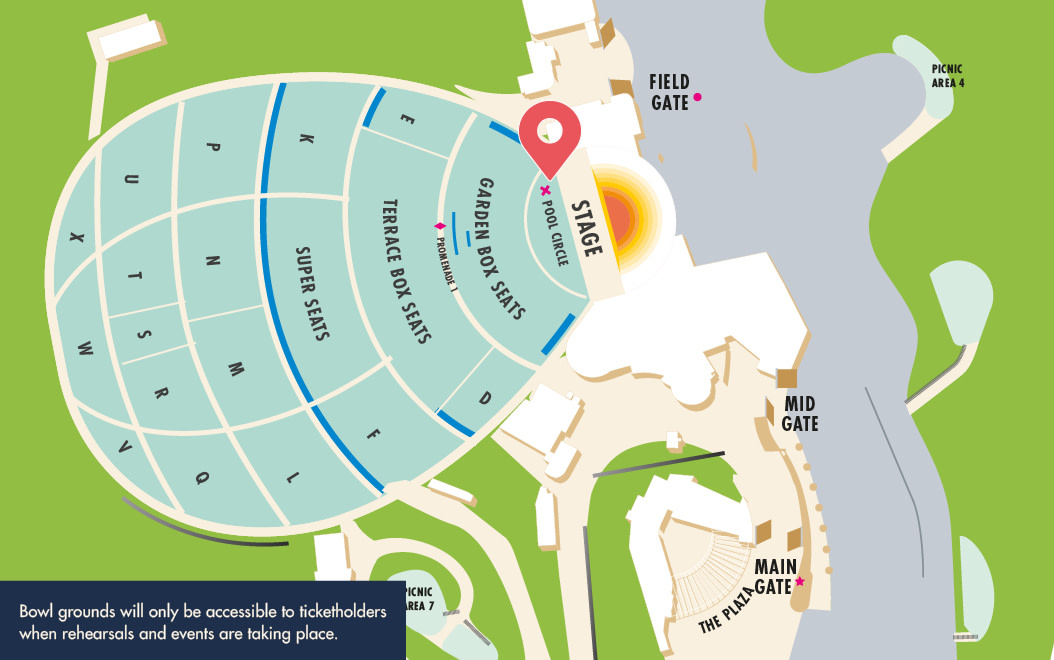
0:00
0:00
